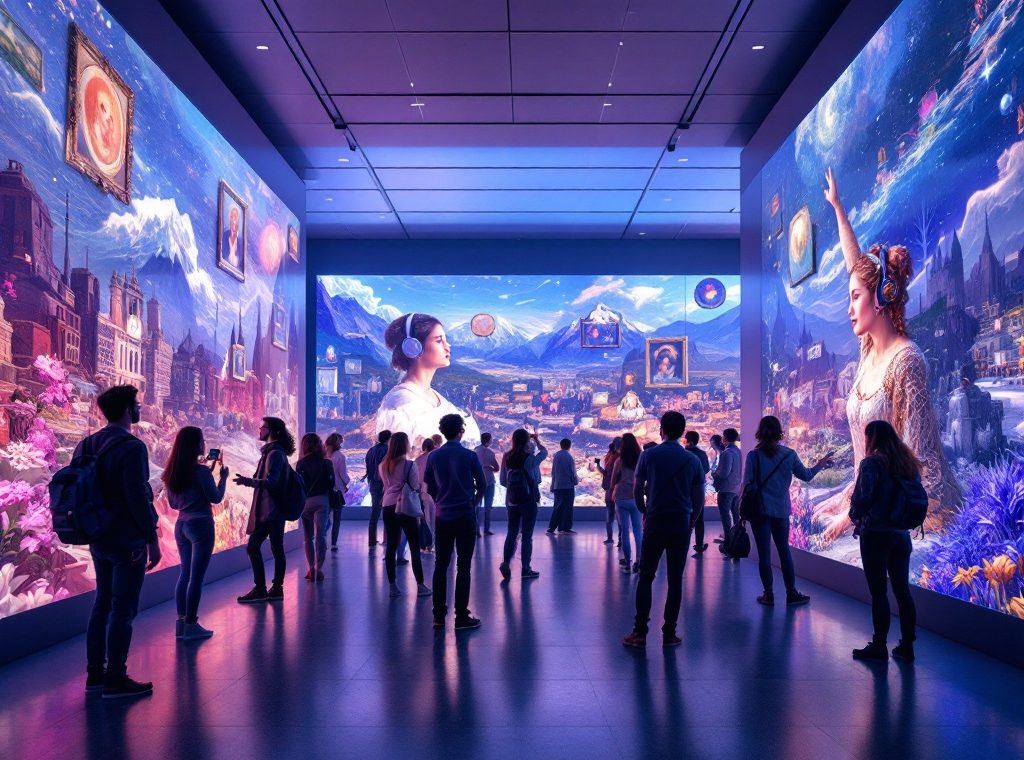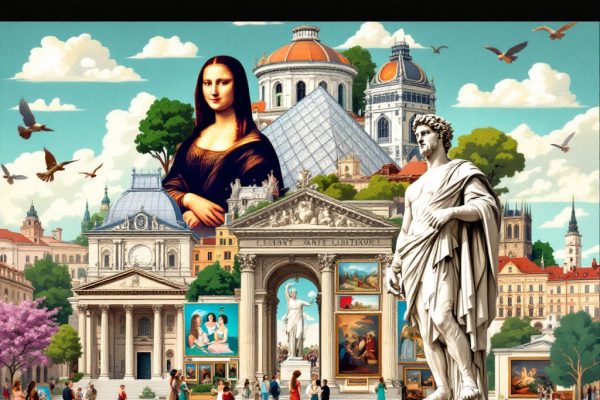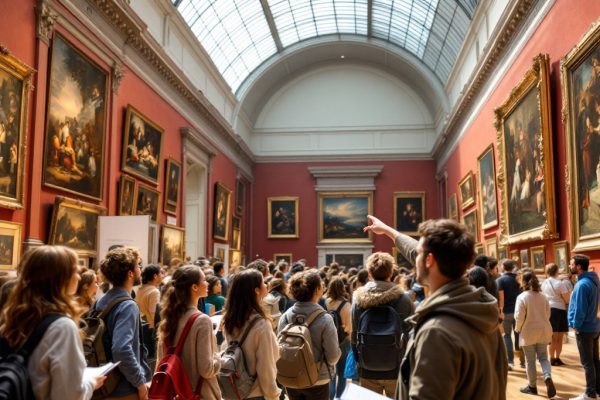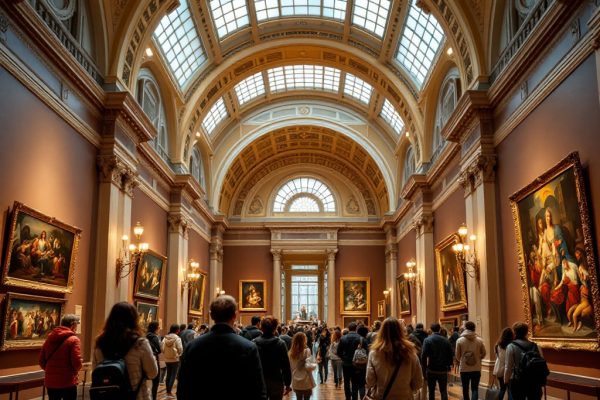Virtual Tours of National Galleries: A New Era of Accessibility
Explore world-class art from anywhere! Virtual tours of national galleries offer high-resolution images and interactive elements, bringing masterpieces to life on your screen. Discover new favorites and delve into details with audio guides and curator commentary, all without travel costs. Experience the power and beauty of art with accessible and engaging virtual tours. Start your art journey today!
Important information
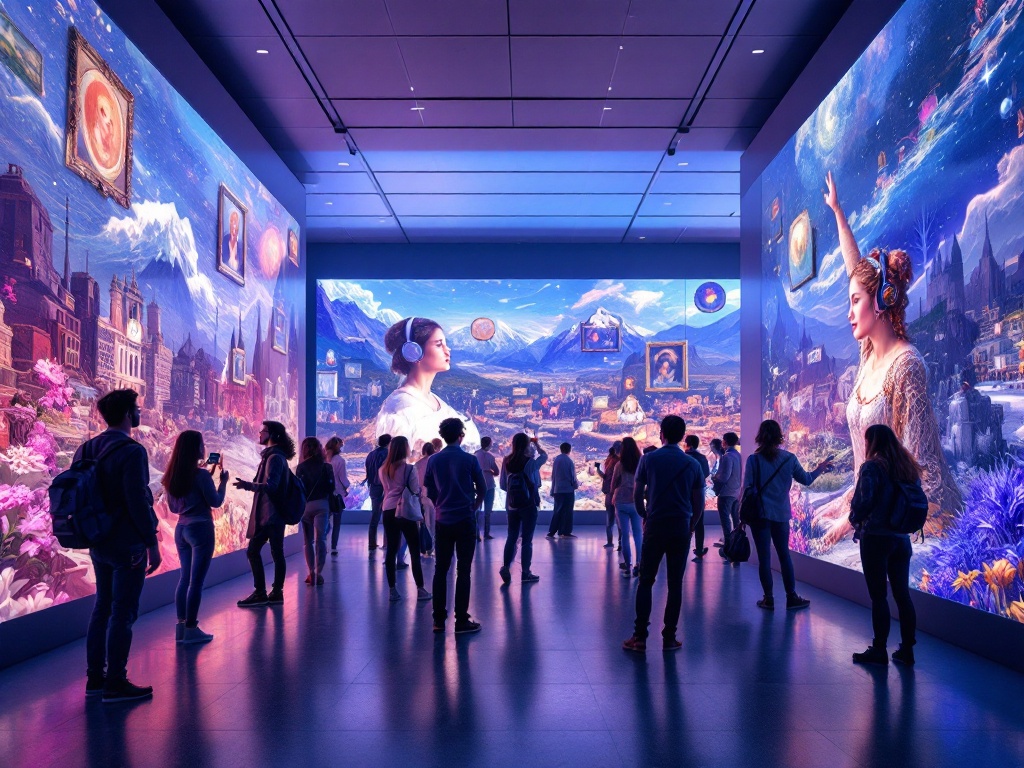
- Virtual tours of national galleries offer access to world-class art from anywhere with an internet connection.
- High-resolution images, interactive elements, and supplemental content like audio guides and artist interviews create immersive online experiences.
- These tours break down barriers of cost, distance, and disability, democratizing art appreciation for a global audience.
- Features like audio descriptions and ASL tours further enhance accessibility for visually and hearing-impaired individuals.
- VR technology expands the potential of virtual tours, offering deeply immersive experiences and new ways to interact with art.
Virtual Tours of National Galleries: A New Era of Accessibility
Experience the world’s finest art from the comfort of your home with online virtual tours of national galleries. These innovative digital experiences use high-resolution imagery and interactive elements, often enhanced by audio guides, to bring masterpieces to life. Virtual tours democratize access to cultural treasures for a global audience by eliminating barriers like travel expenses and geographical limitations. While nothing can truly replace standing before a work of art in person, these tours offer a unique and engaging way to explore exhibits and discover new favorites. They open up the world of art to everyone, offering a taste of its power and beauty.
What Makes Virtual Tours a Game-Changer for Art Access?
Virtual tours break down barriers such as distance, cost, and mobility issues, making art accessible to a broader audience. This inclusivity allows people with disabilities and those in remote areas to engage with art.
Everyone, regardless of their circumstances, can experience these cultural treasures. Furthermore, virtual tours offer personalized exploration and flexible learning, increasing engagement with diverse collections and enriching the art experience for all.
Exploring Art Without Geographic Barriers
Virtual tours break down geographical barriers, making art accessible to everyone, everywhere. Experience world-class collections from the comfort of your home.
This digital approach offers a cost-effective alternative to physical travel, eliminating expenses while maintaining an immersive experience.
High-resolution images bring artwork to life, allowing you to zoom in and discover intricate details.
Virtual tours often enhance the experience with supplemental content like artist interviews and curator commentary, providing deeper insights and enriching your understanding. This democratizes art appreciation for all.
The Role of Technology in National Galleries
Technology is revolutionizing art access. Interactive elements, 360-degree photography, and AR/VR are transforming the gallery experience. These digital tools create immersive environments, replicating physical visits and connecting global audiences with art, regardless of location. High-definition photography and 3D modeling enhance viewing, while audio guides and text overlays provide valuable context for deeper understanding. Technology bridges the divide between art and its audience, fostering deeper engagement.
How Digital Innovations Transform Art Access
Virtual tours dismantle barriers to art, eliminating distance and cost as major obstacles. This digital innovation empowers individuals to experience art regardless of physical limitations or location. The personalized nature of virtual tours allows users to explore at their own pace, revisiting cherished pieces. This is particularly beneficial for people with disabilities or limited mobility, as well as those in remote areas. Virtual tours democratize art appreciation, fostering inclusivity and deeper engagement.
Benefits of virtual tours:
- eliminate distance and cost as barriers,
- empower individuals with physical limitations or in remote areas,
- allow personalized exploration at one’s own pace.
Features of virtual tours:
- allow revisiting favorite pieces,
- offer the ability to zoom in on details,
- enable lingering over captivating works or quickly moving on.
This personalized approach enriches the learning experience and makes art more enjoyable for everyone.
How Virtual Reality Enhances the Gallery Experience
VR revolutionizes art appreciation by offering a deeply immersive experience, allowing for enhanced engagement with both the artwork and the gallery space. A VR headset provides a fresh perspective, enriching a traditional visit. Moreover, VR’s interactive and engaging nature attracts new audiences, fostering a greater appreciation and understanding of art and the gallery environment. VR makes art more accessible to people who can’t physically visit galleries. It also allows viewers to interact with art in new ways, such as exploring 3D sculptures or stepping inside paintings. This technology bridges the gap between the physical and digital, creating exciting opportunities for both artists and art lovers.
Advancements in Accessibility Through Virtual Tours
Audio tours vividly describe artwork, greatly benefiting visually impaired visitors and creating a richer, more inclusive experience.
ASL video tours similarly enhance accessibility for the deaf and hard-of-hearing community, bridging communication gaps and broadening audience engagement.
Virtual tours transcend geographical limitations, allowing anyone with internet access to explore global art collections, truly democratizing access to culture.
Verbal Description Audio Tours for Enhanced Inclusivity
Audio tours enrich the visitor experience by providing detailed descriptions of artwork. These verbal guides are especially helpful for visually impaired visitors, making art appreciation more inclusive. The tours describe the composition, colors, and subject matter of each piece, allowing a wider audience to connect with the art. Imagine the vibrant hues of a Van Gogh painting brought to life through detailed narration. This opens a new world of art appreciation for those unable to see the artwork, while also enhancing the experience for all visitors.
American Sign Language Video Tours: Bridging Communication Gaps
ASL video tours offer a unique way for deaf and hard-of-hearing visitors to experience art. Interpreters translate exhibit details into ASL, ensuring equal access to the gallery for these individuals. This creates a more welcoming and inclusive museum environment for everyone.
Bridging the Divide: Global Access to Art Collections
Virtual tours eliminate geographical limitations, granting global access to renowned art collections. Anyone, regardless of location, can explore prestigious national galleries, experiencing a digital revolution in art appreciation. Interactive features and multimedia elements enhance the experience, making art more accessible and bringing it to life.

